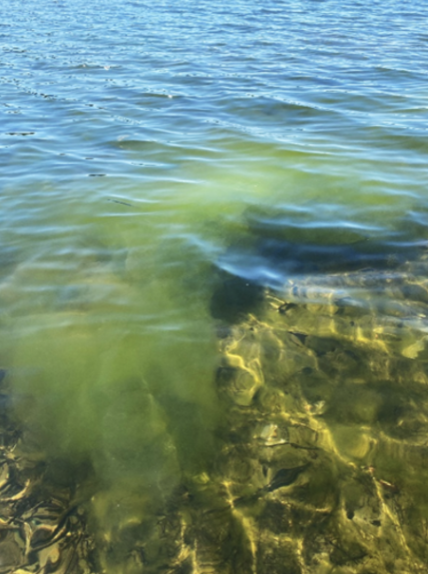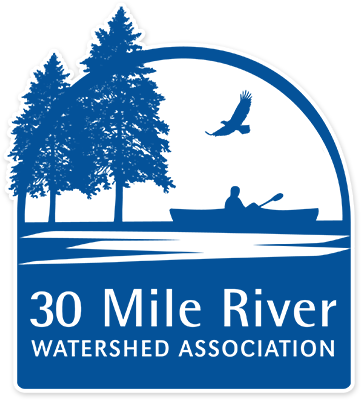Metaphyton is a filamentous green algae that grows in shallow areas of the lake. For well over a decade, inquiries and reports of metaphyton in Maine – and in our watershed – have been on the rise, suggesting that metaphyton growth in Maine’s lakes has been increasing in recent years.
Metaphyton can appear in the lake any time after ice-out, persist through the summer, and begin to die off in late summer when the masses or clouds break up and sink to the lake bottom to decompose – appearing brown in color.
Masses or clouds can vary greatly in size and are typically observed below the water surface, where the free-floating masses become entangled in the stems of rooted aquatic plants. However, masses can sometimes float on the surface of the water due to trapped air bubbles resulting from photosynthesis in the growing season or decomposition in late summer.
The exact cause of the observed increase in metaphyton growth is not well-known or studied. However, limiting factors may include:
- Lake morphology – the shape of the lake bottom. Shallow lakes with more littoral area (shallow, near-shore areas where aquatic plants can grow) may be more prone to metaphyton growth than deep lakes.
- Warming – Though only speculation at this time, increased growth may be influenced by changes in climate, or an increase in the warming of lake littoral zones and earlier ice-out dates.
- Nutrients – Observed increases in metaphyton growth can be linked to increases in nutrient inputs (phosphorus and nitrogen) from the land areas draining to the lake through either over-land runoff or groundwater flow.
Metaphyton can sometimes be a nuisance to lake users, but this common algae is found in many Maine lakes and it does not pose a threat to human or animal health.
Lake Stewards of Maine (LSM) has developed a process to help lake volunteers identify and monitor metaphyton growth in their own lake or pond. For more information, visit LSM’s Metaphyton webpage.
Photo: Betsy Clark, Wayne, ME

This article was included in 30 Mile’s August 2022 newsletter. To view the full newsletter, click here.
